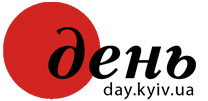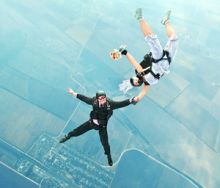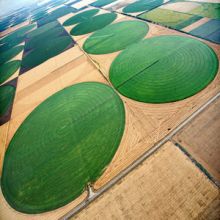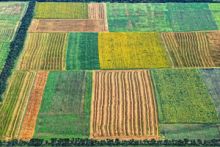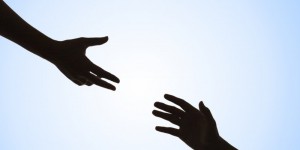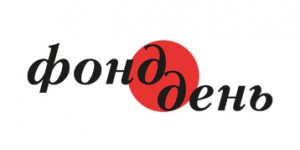Curious Internet users have had an opportunity for several weeks to feast their eyes on the incredible aerial photographs of Ukraine taken by the Odesa-based artist Yurii Lytvynenko and posted on www.mywed.ru. Speaking to Yurii LYTVYNENKO, member of the League of Ukrainian Photo Artists, the Odesa Squadron photographer, a contributor to many specialized publications, Candidate of Sciences (Physics and Mathematics), who is deeply interested in geography, history, and art, we broached not only the subtleties of aerial photography, but also environmental problems, and, what is more, the way the populace and the powers that be view this country. This is especially important on the eve of Euro-2012, a key image-making event.
“I have been the Odesa Squadron photographer for quite a few years, so I took a lot of pictures from a border security helicopter. I’ve been flying on helicopters for about 10 years. Besides, I fly powered paragliders and ultralight trikes,” Lytvynenko began his story. “I admire the works of the French photo artist Yann Arthus-Bertrand who published a photo book, Earth from Above (La Terre vue du ciel), which sold over three million copies. An agreement with UNESCO allowed him to fly all over the world on helicopters. He has been photographing in almost a hundred countries and achieved a superb result.”
Do you intend to put out a similar book on Ukraine?
“Yes. The point is that nobody knows ‘Ukraine from above.’ But there are so many factors that complicate my photography: I cannot fly as often as I did in the previous years, border security helicopters fly a mission and cannot veer off the course (incidentally, it is often forbidden to photograph from them). By contrast with Bertrand’s helicopter, my flying machine is not allowed to hover. It flies at a great speed (about 200 km/h) and causes violent vibration, which makes it extremely difficult to photograph. Of course, private helicopters have big advantages, but you can only hire one if you have personal connections. Another problem is shortage of good pilots. A skilled pilot is very well aware of my goals and, accordingly, flies very well, while an inexperienced one finds it hard to do. Fuel consumption is also a problem.
“I know a few more Ukrainians – in Dnipropetrovsk and Donetsk – who do the same job. We have even planned to carry out a joint project, but this is still open to question. I think Ukraine is facing the problem of photo artist training.
“I have a dream to show all the different parts of Ukraine. I have photographed quite well the south, where I live, but it is a bit more difficult about the north and the east. My advantage is that I do artistic photography, whereas my colleagues mostly prefer news-coverage pictures.”
What struck you the most when you began to photograph Ukraine from above?
“When I was flying for the first time over Odesa, I could not recognize my city. The first sensation was that of unusualness: I can see a dozens-of-kilometers view but cannot recognize the streets I walk every day. Earlier, before the digital technology had emerged, there were much fewer technical possibilities – very often you could snap a shot, but it was of a low quality. Now there’s a different problem: shortage of flights. Then I came to understand the difference in the way the photo artist views things from the earth and from the sky: when one is taking a picture from below, he or she usually tries to show the material and three-dimensional nature of objects, whereas aerial photographs are usually two-dimensional and resembles the paintings of, for example, Gustav Klimt. Interestingly, material photography is a more European practice, while two-dimensional pictures are more typical of the Orient – the people are more sensual there.
“What I am in fact trying to do in the photo album ‘Ukraine from Above’ is to create an artistic image of this country. For example, I like western Ukraine very much: when viewed from above, the tiny plots of land look like elements of an embroidered towel – something that strikes a chord with you. But it is also important for me to raise historical and ecological issues. I want to show not only the beauty and unusualness, but also the sore points of this country. I want to draw public attention not only to the interesting places, but also to their problems. For example, the saltwater lakes of the island Dzharylgach almost went dry in 2007, which one could see very well from above. In eastern Ukraine, the landscape calls into mind, often due to pit refuse heaps, the movie Kin-Dza-Dza: semideserts and plateaus where trees do not grow. The impression is you are on a different planet. When you see these objects as something unusual, you cannot but ponder over their further destiny. Viewed from above, the notorious Chornobyl causes a totally different sensation. But it is difficult to carry out this project, and the point is not only in finding a sponsor to publish the photo album. Among those who helped the abovementioned Bertrand was not only UNESCO but also the governments of almost all countries, and funds were made available for this very purpose. But what helps me is only the fact that I have been flying for many years and clearly know what I want.”
Your photographs help many compatriots and the entire world discover an unusual Ukraine. Do you think we will be able to show Ukraine in a better light, taking into account, for example, the upcoming Euro-2012?
“Last year I planned to publish this book by Euro-2012. But, unfortunately, due to lack of time and finances, I failed to do so. If there were a powerful sponsor and governmental assistance, this book could come out by Euro-2012 ‘with a bang.’
“Unfortunately, the state does not care. They have an entirely different problem – how to cash in on this. I come across these things, for I can see from above who has ‘mastered’ what land. You can see everything from above. Besides, the experience of mingling with border guards, fishery and wildlife area inspectors, historians, and archeologists shows that these services often conflict with one another and find no mutual understanding. Aid comes from art patrons. When you speak on matters like this with some power-wielders, the first question they ask is how much money they can make on this.”
Our newspaper holds an annual photo competition and photo exhibit in which both masters and amateurs take part. We thus see by ourselves and show the Ukrainians our country. We can in fact catch a glimpse of this country’s life in the past year. And we conclude every year that the Ukrainians in fact know their country very little. What do you think?
“Of course, they do not know it. Far from all can say now what the population of Ukraine is or what the highest mountain is and where it is situated. Our compatriots poorly know both the geography and the history of their own country, although this does not apply, of course, to all. It is quite a difficult period now, when it is not in vogue to be clever. On the other hand, when an individual is not glued to his or her home and travels across the country, he or she begins to take a different look at it. I’d like to show them the beauty of Ukraine, which is ‘next to them’ but they don’t know this. This is why they don’t like it. Let me give you an example: when the regional administration asked me to photograph Odesa oblast, I thought: what is there to be photographed? Naturally, the coast and the Zmiiny peninsula present interest, but what will I photograph in the oblast’s 26 districts? I doubted that something would catch my eye. But I was wrong. I found some very interesting places. For example, there are 8,000 astrakhan sheep being raised at a former test range in Tarutyne raion. Who knows this? Virgin grass has been growing there since the 1950s. There still occur wild horses on the Tendrivska Spit and deer in a wildlife reserve on the island Dzharylgach. It is also worthwhile to show the bountiful bowels of our earth – for example, I managed to photograph the Kryvy Rih basin and the uranium mines. We must draw the attention of all the Ukrainians to their own country.”
Photos from Yurii Lytvynenko’s personal pages on the websites mywed.ru and photographers.com.ua
